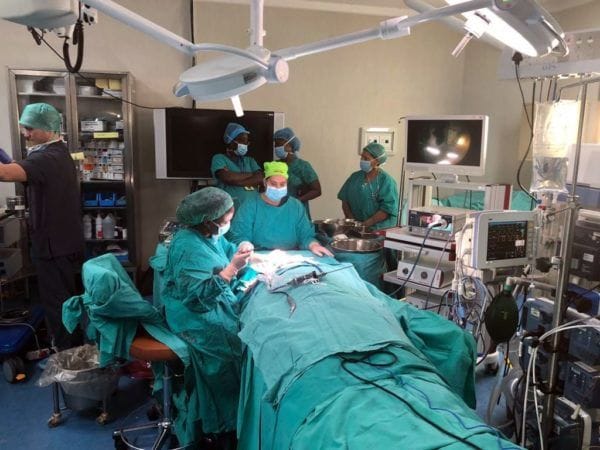![Transplanting 3D printed bones into a human ear [Source: CapeTownEtc]](https://fabbaloo.com/wp-content/uploads/2020/05/image-asset_img_5eb0984684dda.jpg)
Surgeons in South Africa have recently completed an astonishing operation to restore the sense of hearing to a patient, using 3D printing.
This publication is not keen on “world’s first”-style posts, as most of the time such announcements are merely sensational. But this one is quite different.
The surgeons were able to restore hearing to a 35-year-old male who had severe damage to the inside of his ear as a result of a car accident. They were able to reproduce the tiny bones of the middle ear that had been damaged in the accident. During the 1.5-hour operation, these artificial middle ear bones replaced the damaged ones.
Evidently this is the first time this type of surgery has taken place anywhere in the world.
The 3D prints were developed through a complex process of 3D scanning and CAD modeling. It’s likely they extensively scanned the damaged area, as well as the functioning ear on the other side.
This is quite reminiscent of 3D printed prosthetics, in which the surviving limb is often 3D scanned, and then mirrored in CAD. This creates a personalized 3D model of the missing limb that closely resembles the original. I suspect the South African surgeons used a similar process, except on middle ear bones instead of limbs.
The surgical process used to implant the replacement bones was done via endoscope, made possible by the very tiny size of the bones involved. The endoscopic procedure also leaves very little scarring after the operation.
The surgeons explained that the procedure can be used on literally anyone, even newborn babies. It also doesn’t matter how the bones were damaged, whether from accident, disease, or infection. However, it seems to be applicable only in cases where the damage is to the bones of the middle ear; this does not seem to be a procedure to replicate the entire middle ear, as there are many more complex biological structures involved beyond the bones.
It’s not clear from the story exactly what 3D printing service was used for this procedure, but they do explain that the tiny replacement bones were made from titanium. Titanium is one of the few durable metals that are also biocompatible and thus suitable for human implantation.
I’m very impressed with the success of this procedure, as it opens up the possibility for many people worldwide to relatively easily restore their hearing.
The tiniest 3D prints are sometimes the most important.
Via CapeTownEtc











FELIXprinters has released a new bioprinter, the FELIX BIOprinter, which is quite a change for the long-time 3D printer manufacturer.